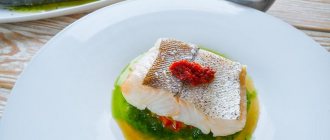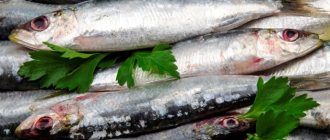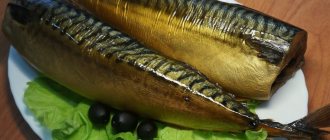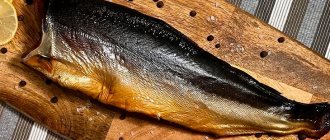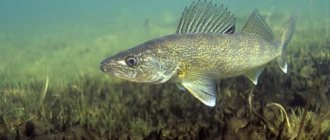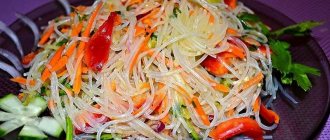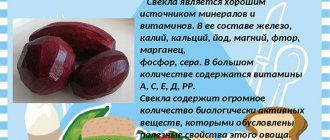Delicacy fish, halibut, or sole, has been known in Russian cuisine for a long time. Recipes for a special fish soup, called kalia, date back to the 16th-17th centuries, and fried halibut with horseradish is widely known. What is halibut, what is its calorie content, what are the benefits and harms?
What side dish do you prefer with seafood?
- Potatoes 30%, 343 votes
343 votes 30%343 votes - 30% of all votes
- Without garnish 25%, 293 votes
293 votes 25%
293 votes - 25% of all votes
- Fresh vegetables 22%, 249 votes
249 votes 22%
249 votes - 22% of all votes
- Stewed vegetables 14%, 165 votes
165 votes 14%
165 votes - 14% of all votes
- Cereals 9%, 103 votes
103 votes 9%
103 votes - 9% of all votes
Total votes: 1153
18.04.2020
- Potatoes 30%, 343 votes
343 votes 30%343 votes - 30% of all votes
- Without garnish 25%, 293 votes
293 votes 25%
293 votes - 25% of all votes
- Fresh vegetables 22%, 249 votes
249 votes 22%
249 votes - 22% of all votes
- Stewed vegetables 14%, 165 votes
165 votes 14%
165 votes - 14% of all votes
- Cereals 9%, 103 votes
103 votes 9%
103 votes - 9% of all votes
Total votes: 1153
18.04.2020
×
You or from your IP have already voted.
Product value and composition
Cold smoked halibut is not only a delicacy, but also a highly valuable food product. It belongs to the category of “white” northern sea fish. The meat is very tender, soft and fatty, there are practically no bones in it.
Important! According to nutritionists and culinary specialists, blue-skinned halibut is healthier than white-skinned halibut. But it is less common, which naturally affects the price.
Halibut, in moderation, can be consumed even by those who have chronic diseases of the digestive system or are on a diet
Meat contains many vitamins, macro- and microelements necessary for humans. Particularly noteworthy is the presence of vitamins:
- group B;
- A;
- E;
- D;
- N;
- RR.
The most valuable macroelements that sea fish is traditionally rich in:
- potassium;
- phosphorus;
- magnesium;
- calcium.
The human body does not synthesize many microelements on its own; the only way to obtain them is “from the outside”:
- iron;
- iodine;
- copper;
- zinc;
- selenium;
- manganese.
Important! This composition, with regular inclusion of the product in the diet, allows you to quickly restore immunity after serious illnesses and surgical interventions. The product is extremely useful for strengthening bones and maintaining good vision.
BJU and calorie content of cold smoked halibut
These indicators depend on its variety and habitat. The fish can be whitebark or bluebark - this can be easily determined by the shade of its belly. As for the second factor, the further north the halibut is caught, the more fat there is in the meat and, accordingly, the higher the indicator. The calorie content of cold smoked halibut per 100 grams varies between 190-250 kcal.
The product does not contain carbohydrates, but is rich in proteins and fats. The content of the former is 11.3-18.9 g, the latter - 15-20.5 g per 100 g. As a percentage of the daily diet at a norm of 2000 kcal, this is 24 and 27%, respectively.
Fresh
Halibut is one of the most delicious fish. Relatively fatty white meat has pronounced gastronomic qualities. The consistency depends on the type of fish, of which there are four:
- Whitebark or common (the largest species).
- Blue-skinned or black (the size of this representative is considered medium).
- American arrowtooth (an inhabitant of the waters of the northern part of the United States is not large in size).
- Asian arrowtooth (the smallest species).
The most tender and tasty meat is considered to be the white-skinned meat, which has a slight sourness, but bonyness is not inherent in all members of the family.
White halibut is included in the International Red Book, so its fishing is limited.
Seafood products are supplied to domestic stores fresh, but more often frozen. In the second case, it is better to buy the whole carcass. The calorie content of 100 g of fresh meat from a representative of the Kambalov family ranges from 102 to 142 kcal. Such indicators are considered low, so it is classified as a dietary product. The fillet is boiled, baked and fried. It should be borne in mind that frying is not particularly suitable for those losing weight, because halibut is a type of fish that perfectly absorbs oil during cooking. As a result, low calorie content increases up to 4 times!
Low calorie content is not the only reason to choose marine meat for your diet. It is incredibly useful due to its rich chemical composition. The exceptional benefit lies in the content of B vitamins, as well as minerals such as selenium, potassium and calcium. No less important is the large amount of Omega-3 polyunsaturated acids in sea meat, which are considered essential for the human body.
Among other things, the benefits of a representative of the Kambalov family are determined by the presence of seven amino acids in the meat, which the body urgently needs. These are valine, alanine, lysine, leucine, arginine, as well as glutamic and aspartic acids, which are involved in many vital processes. By the way, lysine is known for its ability to burn subcutaneous fat deposits, and also have the most beneficial effect on the nervous system.
If you introduce halibut into your diet, eating it 3-4 times a week, you can get rid of excess fat without radically revising the menu. However, preference will have to be given to the most “useful” species – the white-barked one.
In general, eating marine meat helps protect against viruses and bacteria by improving the functioning of the immune system, improve the functioning of the cardiovascular system and prevent the development of stroke, reduce the amount of cholesterol in the blood and strengthen bones. Experts recognize that introducing fish into the diet is especially useful for a sports lifestyle, since its meat is an easy-to-digest protein.
To choose a quality product, you first need to pay attention to the condition of the eyes and skin - they should have a transparent texture and shine. If there is mucus on the fins, it is better to refrain from purchasing. Experts say that when purchasing, you should lightly press the sea creature with your finger. The freshness of the product is indicated by the quick leveling of the surface. But a large amount of ice on it indicates repeated freezing, which has a sharply negative effect on the taste.
It is recommended to store the meat of a representative of the Kambalov family in the freezer (in this case, the shelf life is at least four months), and defrost naturally by placing it on the bottom shelf of the refrigerator.
What are the benefits of cold smoked halibut?
It is rich in proteins and fats with a relatively low calorie content. When cold smoked, fish retains about 90% of vitamins, macro- and microelements. Meat also contains high concentrations of polyunsaturated Omega-3 fatty acids.
The body does not synthesize these substances on its own. And they are extremely useful and provide:
- prevention of cancer, cardiovascular diseases and inflammatory processes;
- strengthening cell membranes;
- normalization of cholesterol levels in the blood;
- slowing down the aging process.
The microelements and vitamins contained in cold smoked halibut are necessary to protect the body from free radicals and remove waste and toxins. They also provide prevention of diseases of the musculoskeletal system and the central nervous system, including those caused by age-related degradation of neurons.
Important! Despite all the potential benefits, the product is contraindicated in chronic liver and kidney diseases.
The nutritional value
Nutritionists justifiably recommend including fish in your diet several times a week: it is a source of animal protein, comparable in nutritional value to chicken breast, and also a storehouse of minerals, fats and vitamins. White-skinned halibut is a dietary fish, and blue-skinned halibut has considerable fat content, so when losing weight, the choice should definitely fall on the former. But in any case, the product includes Omega-3 and Omega-6, as well as linoleic and arachidonic acids. Halibut can be used as a substitute for meat. The fats in the composition are easier to digest and healthy. By the way, the fillet of this fish is digested in a couple of hours, and the meat requires at least 6. It is not surprising that regular consumption of halibut has benefits for health and figure.
Proteins fats carbohydrates
The composition of the BJU of a representative of the Kambalov family is distinguished by a high concentration of protein, which prevents the breakdown of muscle fibers during the period of weight loss. 100 grams of fresh fillet contains 18.56 g, while the fat and carbohydrate levels are 1.3 g and 0 g, respectively.
Depending on the type of treatment, BZHU indicators may vary. For example, in cold smoked halibut, the calorie content of 100 g of which is 247 kcal, fats predominate. They account for 20.2 g, while the protein content is slightly lower - 16.4 g. Carbohydrates, as in the case of fresh meat, are completely absent.
When hot smoking, the calorie content of halibut is reduced to 127 kcal per 100 g, and the BJU indicators become as follows:
- proteins – 23.2 g;
- fats – 3.8 g;
- carbohydrates – 0 g.
A salty product with a calorie content of 163 kcal per 100 g contains:
- proteins – 15.4 g;
- fat – 9.6 g;
- carbohydrates – 0 g.
Lightly salted halibut prepared at home has a lower calorie content, but contains 3 g of carbohydrates per 100 g of product. The amount of fat is similar, and protein is 17 g, that is, they are again in the lead.
Caviar from a representative of the Kambalov family with a calorie content of 107 kcal per 100 g demonstrates the following BJU values:
- proteins – 20 g;
- fats – 3 g;
- carbohydrates – 0 g.
When boiled in water, halibut changes its calorie content to 209 kcal per 100 g. The amount of fat also increases in comparison with fresh fillet - 16 g. Proteins in this case lose a little - 14.6 g, but carbohydrates are again completely absent. If you steam the fish, the calorie content drops to 103 kcal, and the BJU indicators change to the following values:
- proteins – 19 g;
- fats – 3 g;
- carbohydrates – 0 g.
When baking halibut in sauce and whole, the calorie content reaches 120 kcal per 100 g. The BJU values in both cases are also the same:
- proteins – 15 g;
- fats – 6 g;
- carbohydrates – 1 g.
When baked with potatoes, the calorie content remains at the same level, but the BJU indicators become as follows:
- proteins – 10 g;
- fats – 6 g;
- carbohydrates – 7 g.
If you bake the fillet in the oven with vegetables, the calorie content will be 79 kcal per 100 g. The dish will include 13 g of protein, and 2 g and 3 g of fat and carbohydrates, respectively. When preparing delicious steaks in foil with vegetables, their calorie content reaches 86 kcal, and the BJU indicators become as follows:
- proteins – 8 g;
- fats – 5 g;
- carbohydrates – 3 g.
Pan-fried halibut with a calorie content of 201 kcal has the following BZHU indicators:
- proteins – 13.3 g;
- fats – 12.9 g;
- carbohydrates – 7.6 g.
When using a grill, the calorie content does not change significantly, the amount of protein also remains virtually unchanged, but the amount of fat increases to 16.2 g. The main difference is the absence of carbohydrates. There are 0.5 g of them in 100 g of grilled fillet.
Macro- and microelements
Properly selected fish, and halibut can easily be classified in this category, is an excellent help for the body during the period of weight loss. First of all, this is explained by its ability to act as a source of minerals, eliminating the risk of depletion with a limited diet. Tender halibut meat contains macro- and microelements that have a healing effect on internal organs and systems, and are no less valuable for maintaining an excellent figure:
- Iron is an essential microelement that is part of the blood and is essential for regulating the immune system, as well as the normal functioning of the thyroid gland.
- Manganese - due to its activity in the work of many organs and systems of the body, the microelement can be considered irreplaceable, and it is also endowed with antioxidant properties and accelerates wound healing.
- Potassium is an essential participant in many metabolic processes and also reduces the risk of developing chronic fatigue.
- Copper is involved in hematopoiesis, affects the condition of connective tissue and epithelium, increases immunity and improves digestion.
- Calcium is considered the main building element, protects teeth and bones, and is also important for the health of hair and nails.
- Magnesium – has the most beneficial effect on the cardiovascular system, normalizes the functioning of the endocrine and nervous systems, and improves digestion.
- Zinc is part of many hormones and enzymes, has a beneficial effect on the immune system and regulates nervous system functions, normalizes fat metabolism.
- Sodium – supports the functioning of the central nervous system and strengthens the heart, stimulates digestion, maintains acid-base balance.
- Selenium is a strong antioxidant, protects the body from toxins, and reduces the risk of developing cardiovascular diseases.
- Phosphorus is considered important for maintaining kidney health, normalizes metabolism, and also acts as an indispensable source of energy.
Introducing halibut meat into the diet, especially when trying to lose weight, ensures the maintenance of such important systems as the cardiovascular and nervous systems. At the same time, endurance increases several times, metabolism accelerates and immunity is strengthened. It becomes easier to tolerate a limited diet associated with the abolition of snacks and excessive consumption of sweets. Failures are excluded.
Vitamins
Halibut, and especially its caviar, is a record holder for vitamin A (retinol) content. The fat-soluble vitamin is a powerful antioxidant, which means it is extremely important for the normal functioning of the entire body. Vitamin A protects vision, prevents colds and prevents the development of pathologies of the digestive tract.
Among others, there are vitamins included in the B-group:
- B1 (thiamine) - the vitamin is involved in protein, carbohydrate and other types of metabolism, improves the functioning of the nervous system and has a positive effect on the processes of food digestion.
- B2 (riboflavin) – participates in the metabolism of carbohydrates and fats, reduces eye fatigue, and minimizes the sharply negative effects of toxins on the respiratory tract.
- B3 (niacin) is a water-soluble vitamin that is easily absorbed by the body, improving the condition of the digestive system and reducing cholesterol levels.
- B5 (pantothenic acid) – promotes better absorption of other vitamins, activates redox processes, and synthesizes vital fatty acids.
- B6 (pyridoxine) - like other B vitamins, plays an important role in metabolism, reduces cholesterol and lipid levels, and has a beneficial effect on the liver.
- B9 (folic acid) – regulates the functions of the hematopoietic organs, has a positive effect on brain activity and allows for better absorption of other B vitamins.
- B12 (cyanocobalamin) – prevents anemia, improves concentration and relieves irritation, is important for normal growth and development.
Thanks to the content of vitamin E (tocopherol), halibut has a positive effect on peripheral circulation, reduces blood pressure and ensures high-quality muscle function. It also contains vitamin D (calciferol), called the “sunshine vitamin.” It improves immunity, prevents muscle weakness, and has a beneficial effect on intestinal and kidney cells.
Halibut is rich in Omega-3 fat complexes, supplies the body with a sufficient amount of vitamins and minerals, has unique gastronomic qualities and is not high in calories. This is an ideal product for a regular and dietary diet, capable of diluting a “bland” menu. However, you need to know when to stop. If consumed in excess, fish meat can be harmful to people suffering from acute diseases of the gastrointestinal tract. In salted and smoked form, a representative of the Kambalov family is not recommended if you are prone to liver and kidney diseases. And one more thing: old fish spoils the composition of the blood, and also disrupts metabolism and leads to hormonal imbalance, which is unacceptable when losing weight. That is, you can get the full range of benefits only if you choose and eat halibut correctly!
Selection and preparation of fish
The choice of quality carcasses is a determining factor for those who want to get truly tasty fish. The low price is immediately alarming. Also be sure to pay attention to:
- Shelf life. Fresh fish can stay in the refrigerator for no more than 7 days.
- Color and firmness of meat. It should not be yellowish, greenish or brownish, only white. When pressed with a finger, the dent quickly disappears without a trace. Loose, “crumbly” meat is a clear sign of repeated defrosting and re-cooling.
- Aroma. Truly fresh halibut has a distinct “sea” smell. It is impossible to determine its presence after defrosting, but the meat should not smell rotten. Under no circumstances should it be used for smoking.
- Scales. With high quality “raw materials”, it is smooth and shiny, as if wet.
- Weight. There is no need to take a carcass weighing more than 3-5 kg. Even after slicing, a thick layer of meat will not be completely smoked.
Important! You should not buy fish that are practically invisible under a layer of snow and ice. Most likely, this is an attempt to hide the poor quality of the product.
It is impossible to obtain a delicacy from low-quality raw materials
In order for the finished product to be tasty and aromatic, the fish must be properly prepared for processing. Defrost it gradually, on the bottom shelf of the refrigerator. You need to wait until the ice is completely gone and the meat becomes soft. You can speed up the process slightly if you put the carcass in ice water for 2-3 hours.
Large fish are first cut into pieces 6-10 cm thick. If the carcass weighs less than 2.5-3 kg, it is simply gutted and the head and tail are cut off.
How to pickle halibut for cold smoking
The recipe for preparing cold smoked halibut at home involves pre-salting the fish. The following ingredients will be required (per 1 kg):
- water (1 l);
- coarse salt (6 tbsp);
- granulated sugar (2 tbsp.);
- bay leaf (3-4 pcs.);
- black and allspice pepper (15 peas each).
Important! Additional ingredients to taste - fennel seeds, juniper berries, dry herbs (parsley, dill, rosemary). You can also add the juice of 1-2 lemons to the brine.
The water with the addition of all the spices is brought to a boil and cooled under a closed lid to room temperature. Then the pieces are poured over them so that they are completely covered with brine, and left in the refrigerator for 2-3 days, turning them over several times a day.
After salting is completed, the fish is poured with clean water for 2-3 hours, getting rid of excess salt. The fluid needs to be changed every hour.
The final stage of preparation is drying. Immediately before the process, the halibut is wiped dry with paper towels, napkins or a clean cloth and ventilated in fresh air for 3-4 hours. Insects flock en masse to the smell of fish, so you need to think about a defense mechanism against them in advance.
If you don’t have time to wait, you can resort to “dry” salting the halibut for cold smoking. No water needed here. All other ingredients are mixed, rubbed evenly over the pieces and left in the refrigerator for 12 hours. After this, the fish is rinsed, but not washed in water, and also dried.
Important! Drying time is determined by the type of halibut skin. When it begins to turn gray and dry out, you can begin the cold smoking procedure.
Description
Halibut is a fish that is found in cold waters and feeds on small aquatic inhabitants. According to the description, it has a different color, from light olive to black. The eyes of individuals are located on the right side of the head, which is the main distinguishing feature of this marine inhabitant.
Photo of halibut
Main types:
- white-haired - considered the largest individual, reaching 350 kg and 5 m in length;
- bluebark - is a medium-sized individual weighing more than 50 kg and over 1.5 m long;
- American arrow-toothed - grows to a maximum of 85 cm, weighs about 3-4 kg, lives in North America;
- Asian arrowtooth is the smallest individual of this species, reaching only 70 cm in length and weighing about 2 kg.
This is a valuable commercial fish; in addition to its meat, caviar is eaten. It is light beige or creamy white in color. The eggs have a clean sea smell and delicate taste. The texture is elastic, but uneven. The characteristic flexible capsule contains a brackish liquid and is easily ruptured. The grains are large and polygonal. Caviar is a gourmet product.
How to Smoke Cold Smoked Halibut
Cold-smoked halibut requires a “precision” smoker that can create and maintain a constant, relatively low temperature. Therefore, it requires additional structural elements - a generator and a pipe that supplies warm air to the “compartment” where the fish is smoked.
In the smokehouse
Classic recipe for cold smoked halibut:
- The washed and well-dried fish is placed in the smokehouse, placing the pieces on the grill in one layer so that they do not touch each other.
- At a constant temperature of 20-25°C, it is treated with smoke for 4 hours.
- After this, the pieces are removed, quickly sprayed with water from a spray bottle, moderately peppered if desired, and sent back to the smokehouse. The delicacy will be ready in another 18 hours.
To control the temperature in the smokehouse, it is recommended to use a special thermometer; its constant value is very important
Important! Compared to other fish, halibut is smoked faster – in just a day. But the process cannot be interrupted for long so that the product does not deteriorate.
Without smokehouse
Using “liquid smoke” allows you to quickly prepare cold-smoked halibut at home. But it is not recommended to abuse this substance; it contains carcinogens. The taste of fish prepared using this method is practically no different from the “classic” one.
Necessary ingredients for cold smoking 1 kg of halibut with “liquid smoke”:
- water (approximately 400 ml);
- juice of 1-2 lemons;
- “liquid smoke” (maximum 50 ml);
- salt (3 tbsp);
- granulated sugar (1 tsp);
- onion peel (1-2 handfuls).
It is prepared like this:
- Washed and dried portions of halibut are rubbed with a mixture of salt and sugar and sprinkled with lemon juice.
- Place them in any bowl and put them in the refrigerator for three days, turning the contents of the container several times a day.
- Boil onion peels in water. Allow to simmer for about 10 minutes, then cool to room temperature.
- The pieces are washed and poured with this decoction for an hour so that the liquid covers them completely.
- After removing the halibut from the container, dry it with napkins or a towel. Using a silicone pastry brush, apply “liquid smoke” to it as evenly as possible.
- During the day, the fish are kept in a draft, providing constant ventilation. Place any container underneath to drain the fat.
Important! Cold-smoked halibut is prepared using this method at an “accelerated pace,” but it also spoils faster. You can store it for a maximum of 4-5 days.
Calorie content of halibut in the oven
Halibut fish baked in the oven boasts both excellent taste and benefits for the body. The calorie content of baked halibut is closer to 150 units/100 g. This energy value of baked halibut is relevant for a mono-dish, in the preparation of which no other ingredients were used, with the exception of salt and spices. Halibut baked with vegetables will contain fewer calories - about 80 per 100 grams. Baked fish with potatoes contains 120 kcal per 100 g.
Halibut in the oven with potatoes:
- Peel 500 grams of potatoes and cut into small slices
- Mix together a little olive oil, salt, pepper and chopped garlic, brush the resulting mixture onto the potatoes.
- Microwave at maximum temperature for 5 minutes. Then mix and microwave again for 5 minutes.
- Wash halibut fillet and cut into portions
- Rub the fish with pepper and salt
- Line a baking dish with parchment and place potato pieces and fish on top.
- You can put a slice of butter and herbs on top
- If desired, garnish halibut with thin lemon slices
- Bake in the oven at 200 degrees for 20 minutes
What does cold smoked halibut smell like?
The smell of cold-smoked halibut largely depends on what exactly was used as “wood” in the smokehouse. Most often, chips or branches of alder, hazel, bird cherry, and fruit trees (apple, cherry) are placed in it. To enhance the aroma, add some dried or fresh juniper berries and cumin seeds. Also used for this purpose are chips of oak barrels in which cognac and whiskey were aged.
You can distinguish halibut prepared in the “classical” way from the one smoked in “liquid smoke” precisely by its aroma. In the first case, the smell is subtle and delicate, in the second it is noticeably sharper.
Halibut smoked in a smokehouse not only looks, but also smells more natural.
Calorie content of boiled halibut
Boiled halibut is a healthy dish for those who are on a diet or have health problems. 100 grams of boiled halibut contains only 210 calories, and the product contains many useful substances: amino acids, B vitamins, unsaturated fatty acids, potassium and calcium. It turns out to be a completely dietary, but balanced dish.
It only takes about 15 minutes to cook the halibut, resulting in a quickly prepared and healthy dish. To diversify and improve the taste, you can experiment with a variety of spices and herbs, herbs and vegetables. And the broth left after cooking the fish can be used as a basis for a light fish soup. Boiled halibut can be not only an independent dish, but also a component of a variety of salads.
What do you eat cold smoked halibut with?
Cold smoked halibut is quite “self-sufficient”; when served, it can act as an independent second course. But most often a side dish of vegetables is added to it. The classic option in this case is mashed potatoes.
Men value this fish as a beer snack. In this capacity, it is used as slices or on toast and sandwiches.
Cold smoked halibut is also in demand as an ingredient in salads. Good “companions” for him:
- lettuce leaves;
- fresh cucumbers;
- sun-dried tomatoes;
- boiled eggs;
- cheeses such as feta cheese, feta;
- green pea.
Important! For salad dressing, a mixture of olive oil and lemon juice is best.
There are a lot of recipes for salads with cold smoked halibut, but it’s quite possible to invent your own
Calories in fried halibut
There are two ways to fry halibut fillets: in a pan or on the grill. The second cooking option is more healthy, but not everyone has the opportunity to grill halibut at home. Therefore, one of the most common dishes is fried halibut, the calorie content of which exceeds 200 units/100 g. The calorie content of grilled halibut is approximately the same - a little more than 200 kcal per 100 grams, but the dish prepared in this way will be much healthier than the carcass fried in oil. In both cases, you need to salt the dish at the end of cooking. You can serve fried halibut with fresh vegetables, and it is better to eat it for second breakfast or lunch.
Difference between cold and hot smoked halibut
Halibut prepared using the hot smoking method, compared to fish prepared using the cold method, has a richer aroma and retains maximum fat content. Exposure to high temperatures (80-120ºС) guarantees the destruction of all parasites. Halibut cooks faster (about 2 hours) and does not require preliminary preparation, a specific smokehouse design or special skills.
However, a significant part of the nutrients is lost in the process. And the shelf life of hot smoked halibut is shorter - only 2-4 days.
There are also noticeable differences in the “consistency” of the meat. When cold smoked, it is denser, more elastic, and effort must be made to separate it from the bones. Hot-cooked fish is soft and crumbly.
Hot smoked halibut even needs to be tied up, otherwise the fish will crumble in the process
Calorie content of halibut per 100 grams
This is one of the most delicious predatory fish, affordable for different segments of the population. The meat is tender, moderately fatty, with a slight sourness, not bony. This fish reaches Russian shelves in fresh or frozen form. Fresh halibut calorie content per 100 grams ranges from 100 to 150 units. This is a fairly low indicator, so halibut is excellent for the diet table. Of course, you can’t just eat fish fresh, so it’s better to consider the nutritional value of a dish prepared in a certain way. For those who are on a diet, the best option is boiled or steamed halibut. But it is better not to eat fried fish in this case, because during the frying process, the fillet absorbs oil, which is why the calorie content of the halibut increases 4 times.
To prepare a tasty and healthy dish, the most important thing is to choose a high-quality main product. To choose the right halibut, pay attention to the color of the scales and eyes. They should be translucent and shiny. Avoid fish carcasses with mucus on the fins. When choosing a fish, press it with your finger. If the surface of the carcass quickly levels out, it means it is fresh.
If there is a lot of ice on the carcass, it means that it has been defrosted and frozen several times, and a dish made from it is unlikely to be tasty. It is recommended to store halibut carcasses in the freezer and defrost them on the bottom shelf of the refrigerator.
BJU of halibut:
- Proteins – 19 g
- Fats - 3 g
- Carbohydrates - 0 g
How to store cold smoked halibut
It is recommended to cook cold smoked halibut in small portions. Just in the refrigerator, fish smoked in the “classical” way will last for 8-10 days. Halibut cooked using “liquid smoke” is half the size. After the specified period, it is strongly not recommended to eat it. The minimum duration of the “shelf life” is due to the high fat content of the fish.
If for some reason storing cold smoked halibut in the refrigerator is not possible, there are alternative storage options:
- In a cool, dark place with good ventilation. Each piece of fish is wrapped in clean natural cloth, soaked in a strong salt solution (about 20% concentration).
- In a basement or cellar at a temperature close to 0ºC. Pieces of halibut are placed in a wooden box or cardboard box, the bottom of which is lined with gauze soaked in a saline solution. They cover it on top. Instead of gauze, you can use fresh nettle leaves.
Important! Using these methods, cold-smoked halibut will last at least 4-5 days longer than refrigerated halibut.
How to choose the right halibut
The type of fish in question is supplied to retail outlets frozen or chilled. To buy a truly healthy product, and not get poisoned as a “bonus”, you need to know some rules for choosing halibut:
- pay attention to the amount of ice on the frozen fish - the more there is, the more often it was defrosted and frozen again, that is, its storage conditions were violated;
- there should be no mucus on the halibut scales - its presence “indicates” that the product is stale;
- The skin and eyes of chilled fish should be moist and shiny - dullness indicates that the product has been stored for too long.
Please note: when preparing halibut, experts recommend removing the fins first - they have a sharp and too specific aroma that can hopelessly ruin the taste of any, even the most exquisite, dish.
Halibut is a valuable fish that brings maximum benefits to the human body. According to doctors, you need to consume this product 2-3 times a week, 100-150 grams per dose, which will ensure the supply of vitamins and nutrients in the required volume.
14, total, today
( 185 votes, average: 4.64 out of 5)
Diet for urate kidney stones
Grapefruit: benefits and harm

